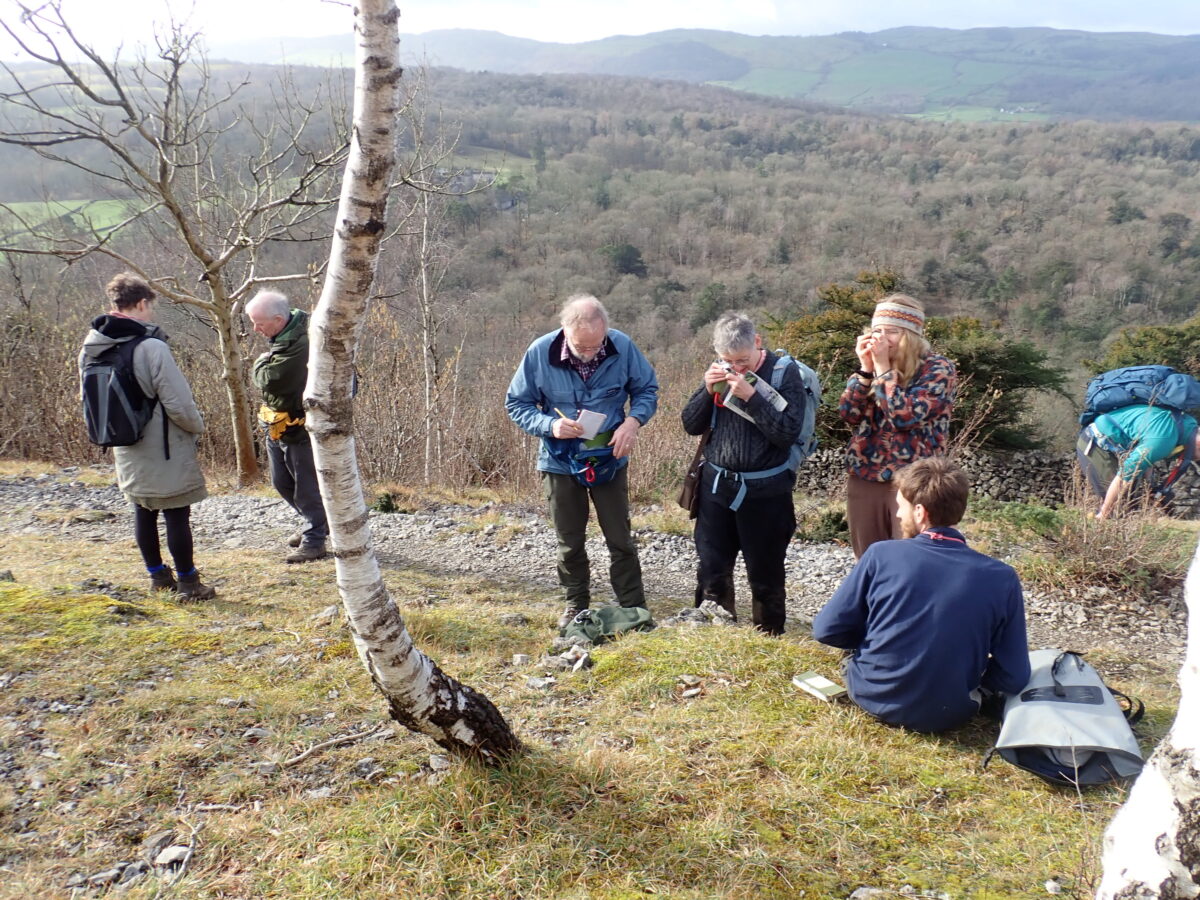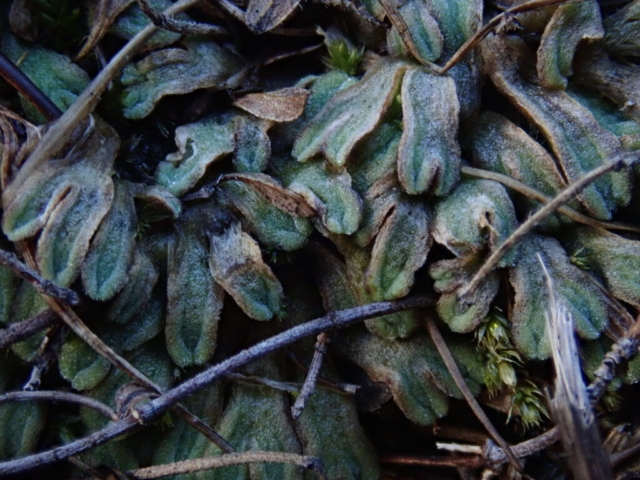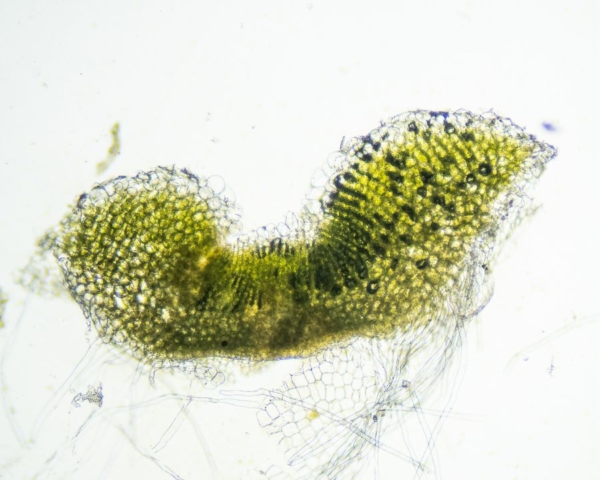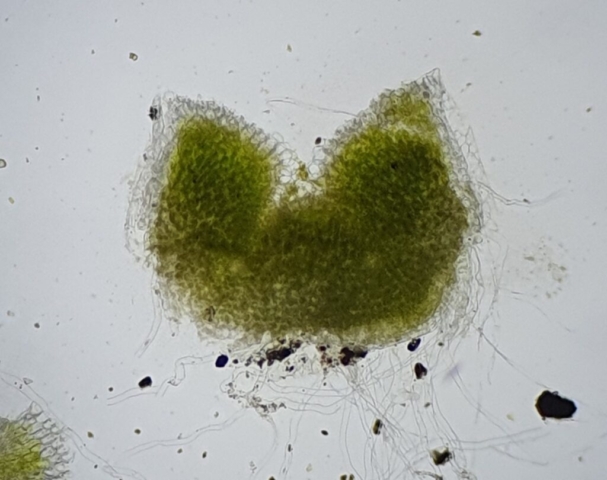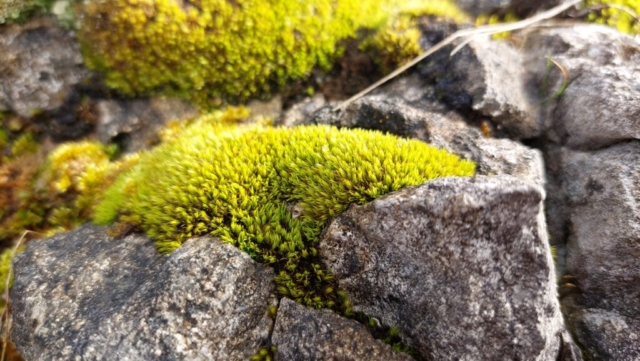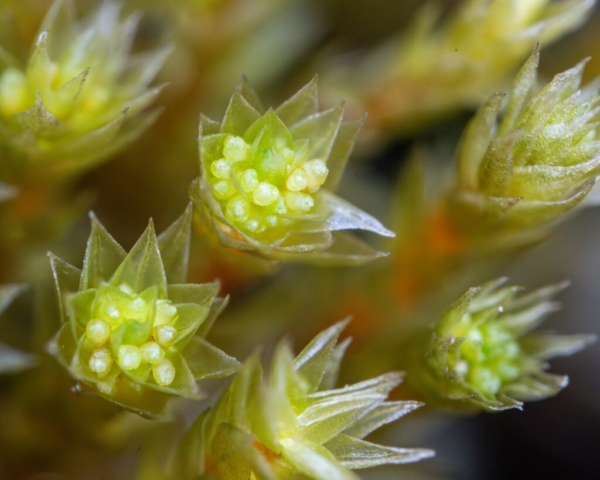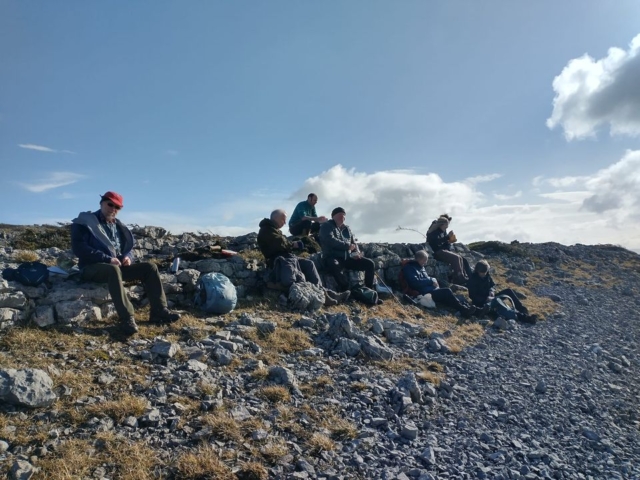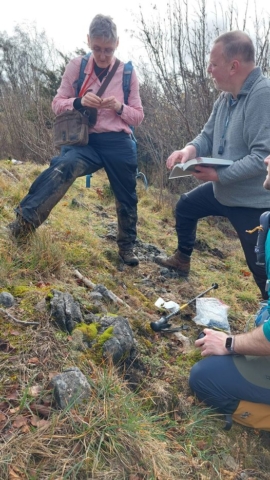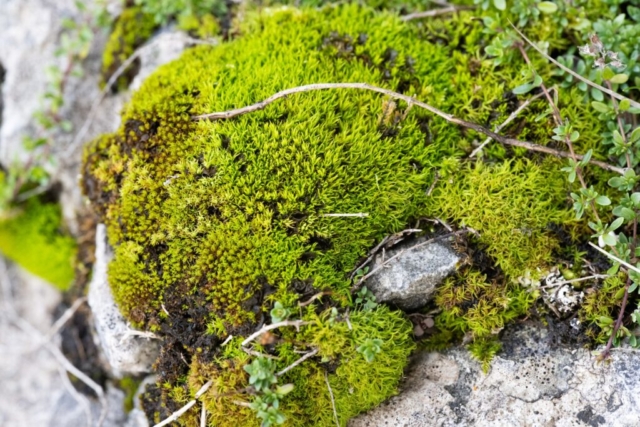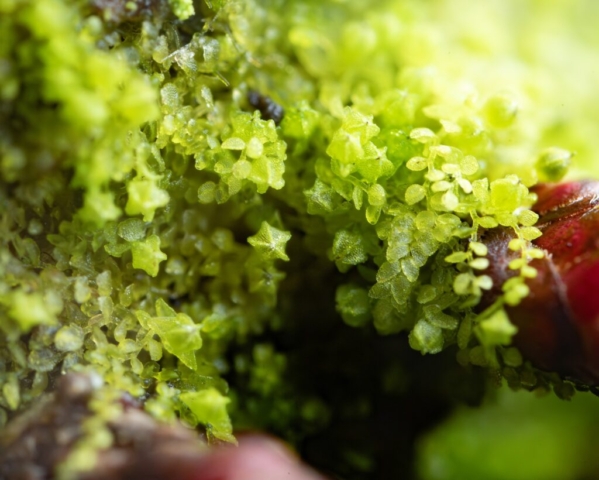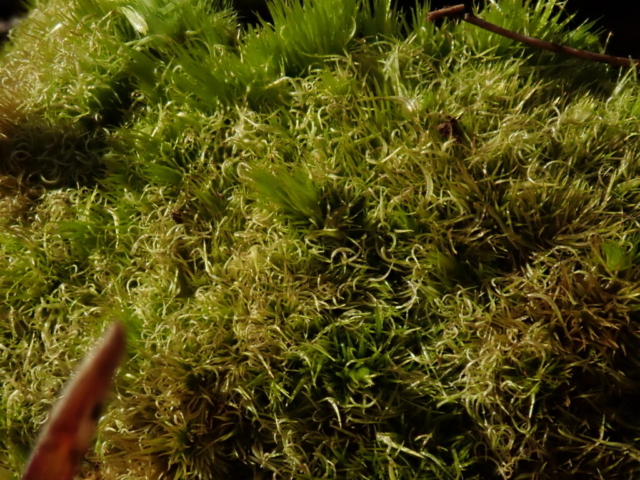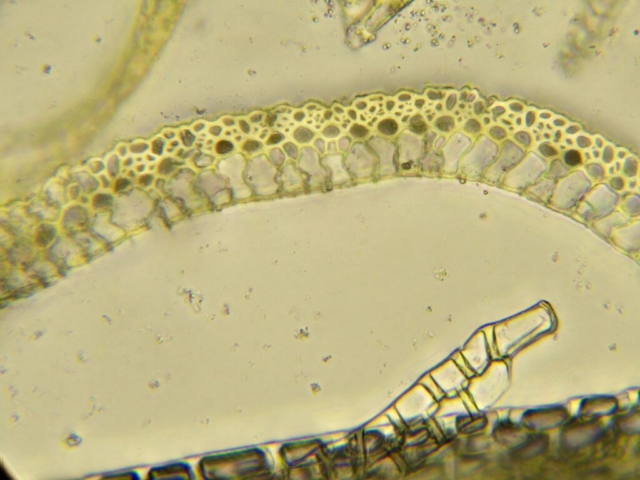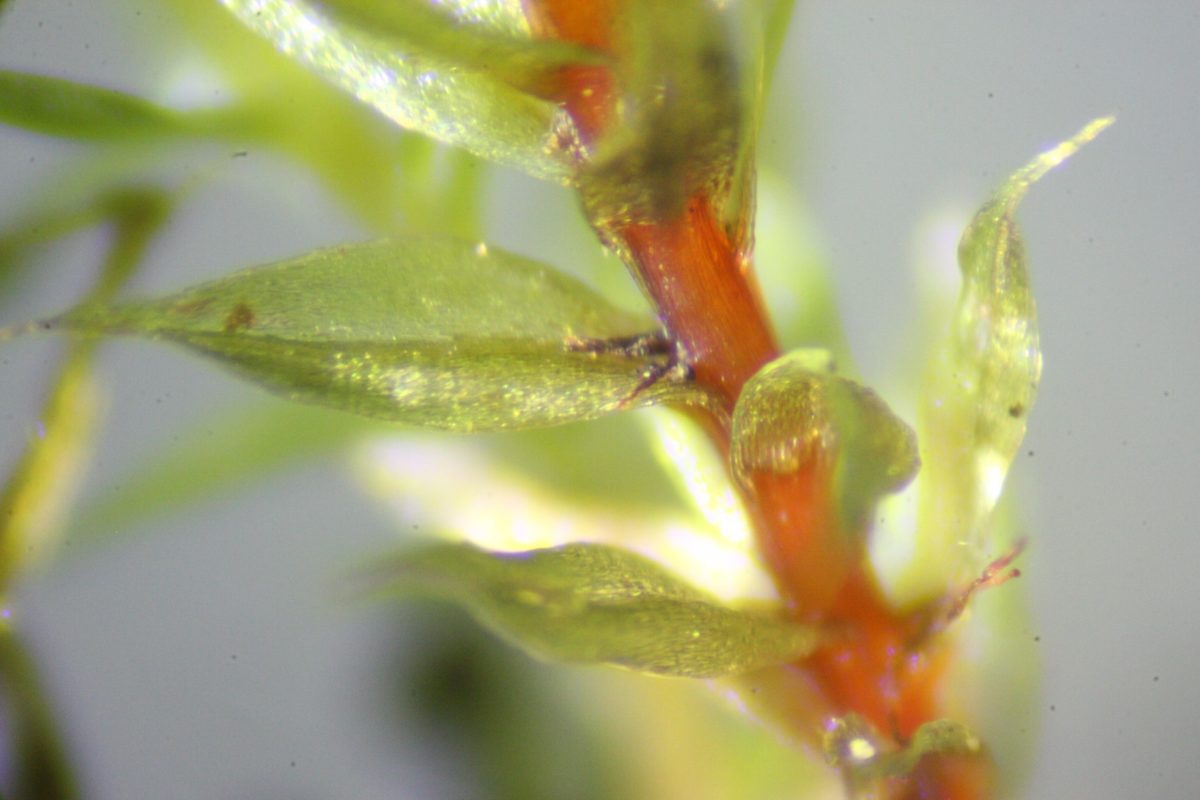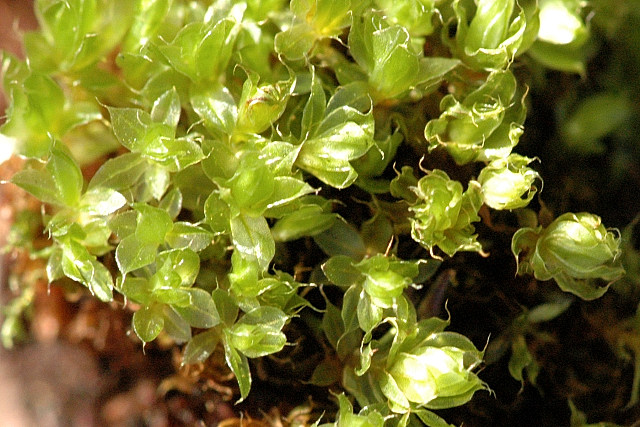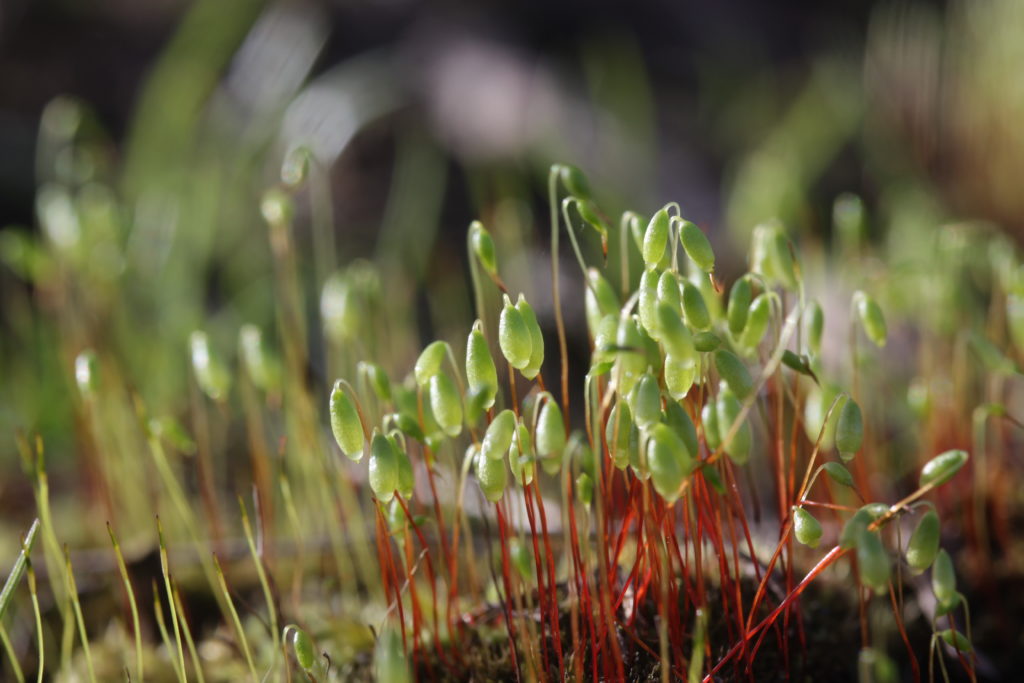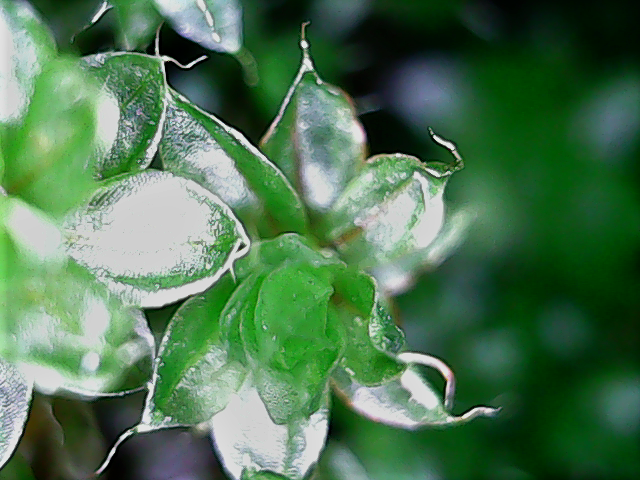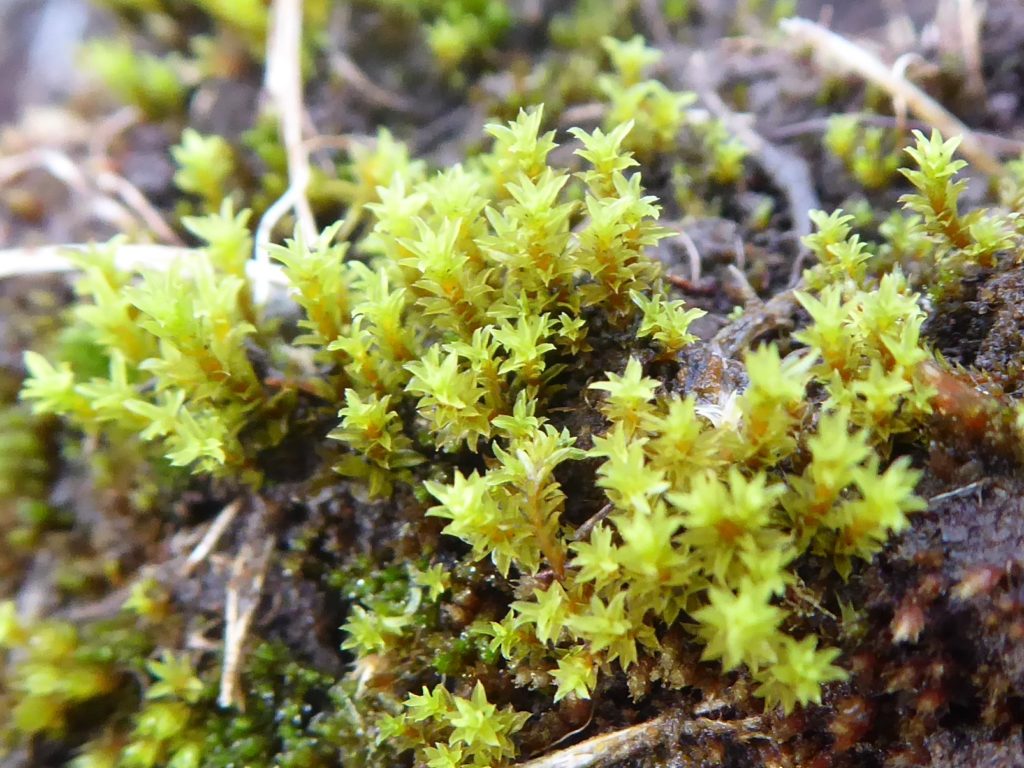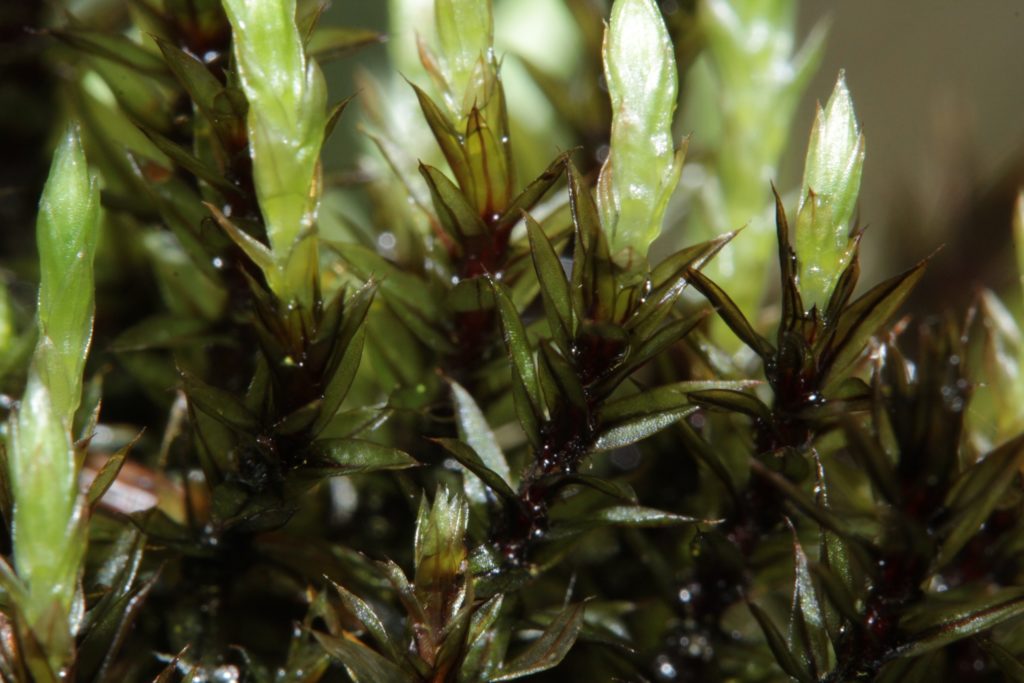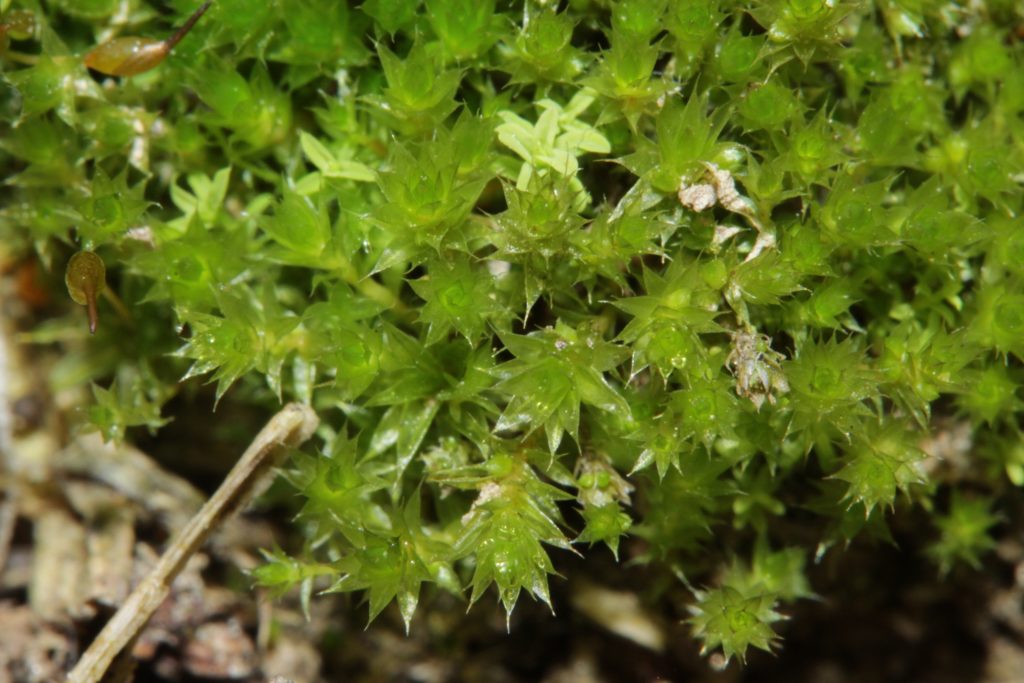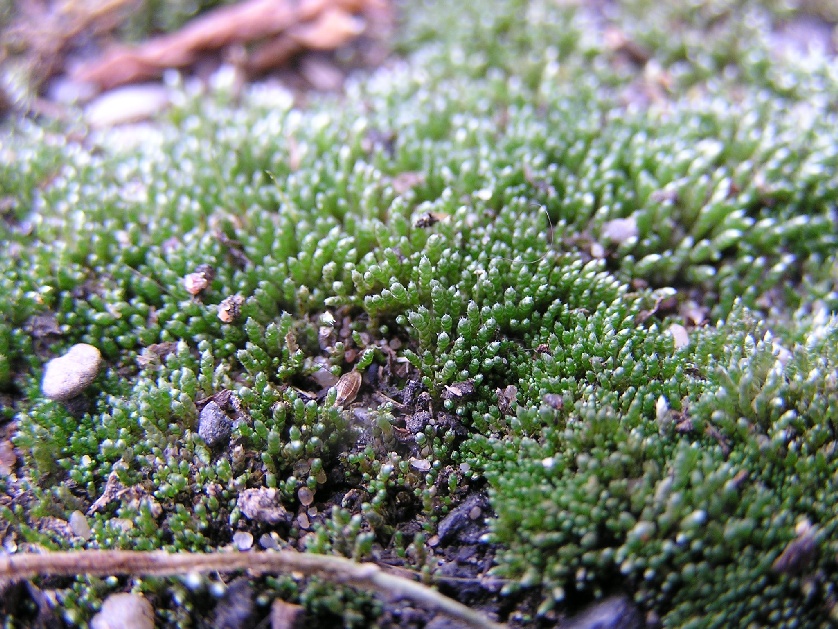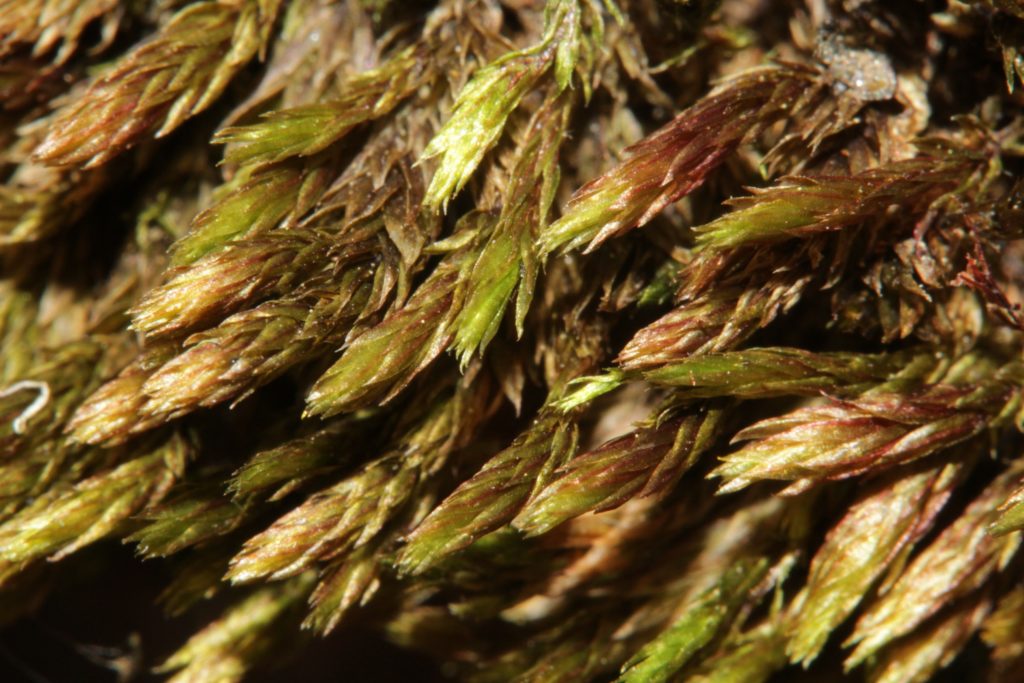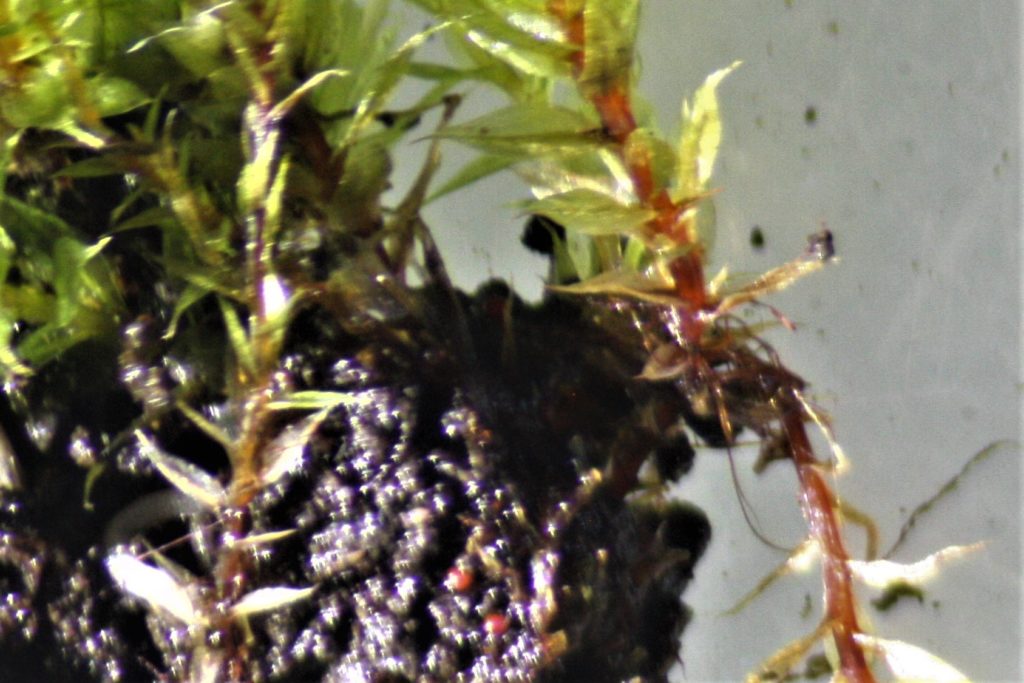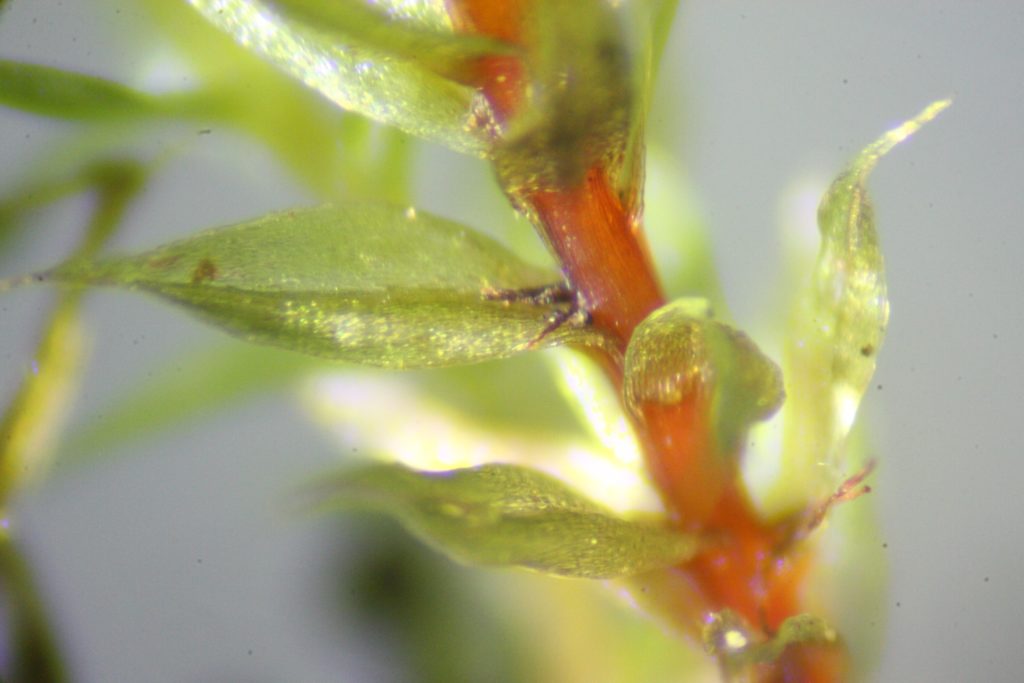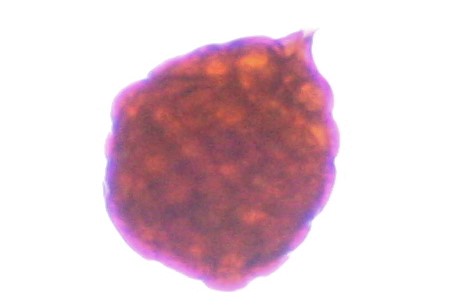It was great to welcome a number of new faces amongst the dozen bryologists who assembled in the ample parking area, ready for the fray. The group’s chosen modus operandi, holding field visits which fall on various days of the week including Sundays, is clearly working, allowing people the option to attend when it suits. It surely also helped that Sunday’s forecast was reasonable, and improving, as the day progressed. In truth, the weather was superb for February, everyone enjoying the sunshine, the extensive views from the top of the scarp, and of course the chance to look at mosses without rain!
Whitbarrow is a limestone scar – essentially, the compressed remains of uncounted billions of sea creatures from 350 million years ago, which died and sank to the bottom of the shallow tropical sea, their skeletons of white calcium carbonate slowly turning into Carboniferous Limestone. The tectonic plate drifted from the tropics, to a higher latitude, was uplifted, and now the Scar stands a “mighty” 210m (at highest point) above sea-level, here in Cumbria. Given that it sit on a coastal plain, its modest height nevertheless gives Whitbarrow superb views, both out across the bay, and inland to the higher, more acid hills of the central lakes.
The limestone creates habitats and bryophyte communities which are quite uncommon in Cumbria (have a look at a geological map – there’s not many places where limestone exposures exist). Bryophytes, just like lichens, are sensitive to underlying pH, so the alkaline conditions created on limestone allow a suite of liverwort and moss specialist “calcicoles” to evolve. (Calci = calcium, –colere = “inhabit”, so “things which inhabit calcium-rich areas”). Although soils and seepage water derived from limestone are indeed strongly alkaline, the situation is complicated by the presence of loess (wind deposited sediments) and the development of humus-rich soils in pockets on the limestone, which over time become leached by the glorious Cumbrian rain, and so can become really rather acid in pH. Pockets of acid soil, in a predominantly alkaline habitat, means that the bryophyte communities are rich and varied, and create mosaics where calcicolous and acidophile species can sit side by side. A case in point? We came across two Riccia species, neither of which are all that commonly recorded in Cumbria. Riccias are a group of small liverworts which are colonists of bare, wet, mud – they pack their life cycle into a short time (whilst the mud is wet) and exist as spores in the long dry spells. Riccia beyrichiana grows on acid soils, whereas Riccia sorocarpa is a calcicole. They were two metres apart.
The main objective for the day was to record on Cumbria Wildlife Trust’s Hervey Reserve which includes Lords Seat, the highest point on the scar. Despite being a National Nature Reserve, Site of Special Scientific Interest and Special Area of Conservation, there are several monads on Whitbarrow with surprisingly few records. We climbed the steep path through the wood trying to resist the urge to stop and look at the abundant mosses and liverworts present as this was outside the target square. Once over the stile and into SD4486, the pace slowed as the mosaic of limestone grassland, woodland, and broken rock and scree of the Park Limestone were closely examined. The calcicoles Ctenidium molluscum, Neckera crispa and Tortella tortuosa were conspicuous at almost every stop, and there were fine patches of Flexitrichum (formerly Ditrichum) gracile in places. Closer inspection of some of the Tortella revealed the presence of the uncommon Tortella densa. Acidophiles such as Hylocomium splendens, Hypnum jutlandicum and Polytrichum formosum, and more generalist species such as Thuidium tamariscinum, Pseudoscleropodium purum and Dicranum scoparium were also frequent in the grassland. Close inspection of the ant-hills revealed the identities of numerous small acrocarps (unbranched mosses) including Bryum dichotomum with bulbils visible on the shoot tips, Weissia controversa with abundant capsules, and Barbula convoluta.
After lunch just below Lord’s Seat, we dropped down the dip slope and onto the Urswick Limestone with its distinctive pavements. Here Clare found Rhytidium rugosum growing with (and looking very like) Hypnum cupressiforme var lacunosum (formerly Hypnum lacunosum), and soon we were spotting it everywhere! Rob found Marchantia (formerly Preissia) quadrata growing on the low cliffs, and we also found Tortella nitida here, helpfully growing with T densa and T tortuosa for comparison. Argles Tarn was an obvious place to visit as a ‘bonus habitat’. The relatively uncommon Campyliadelphus elodes had previously been recorded here and we may have found a small amount growing on pavement near the tarn margin, but this is still to be confirmed. Calliergonella cuspidata and Scorpidium cossonii were also found here. The developing Hazel woodland around the tarn proved to be of interest too, with numerous “corticolous” (on wood) species including the liverworts Myriocoleopsis (formerly Cololejeunia) minutissima, Radula complanata, Metzgeria violacea and Ricardia palmata. On our way back, Campylopus fragilis and Encalypta streptocarpa were added to the list, which at the time of writing stands at 77 species for SD4486.
Report by Gary Lawrence and Kerry Milligan
Photos by Paul Ross (PR), Clare Shaw (CS), Peter Bullard (PB) Gary Lawrence (GL) and Kerry Milligan (KM)
